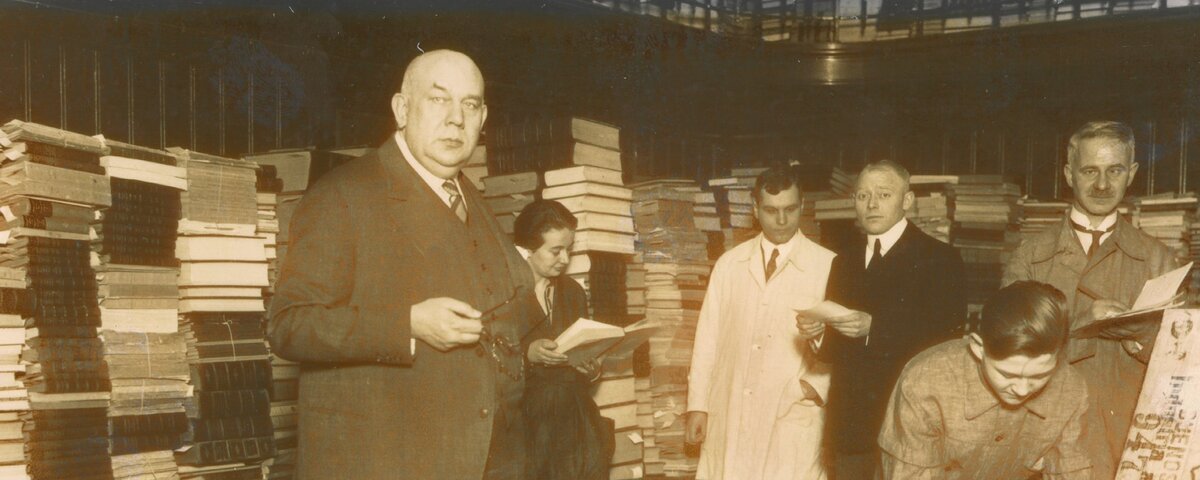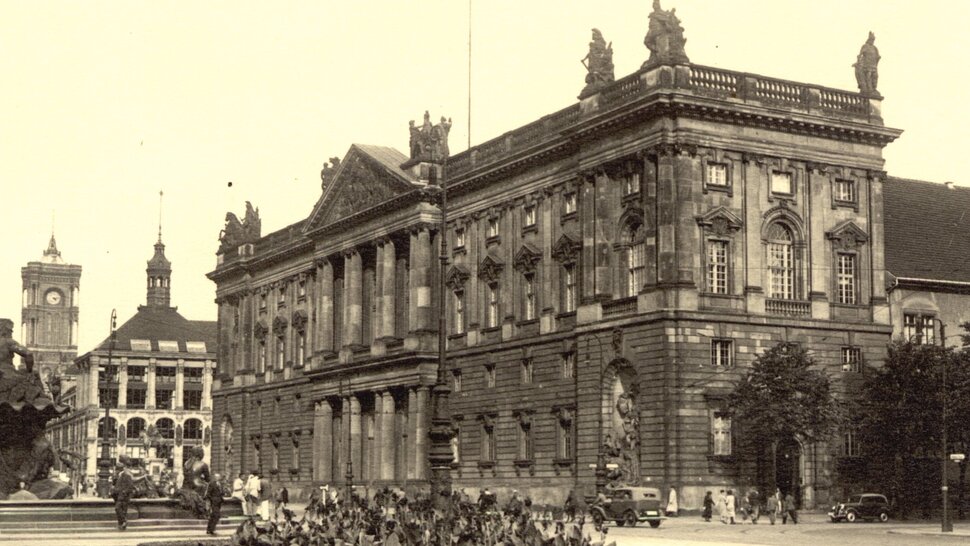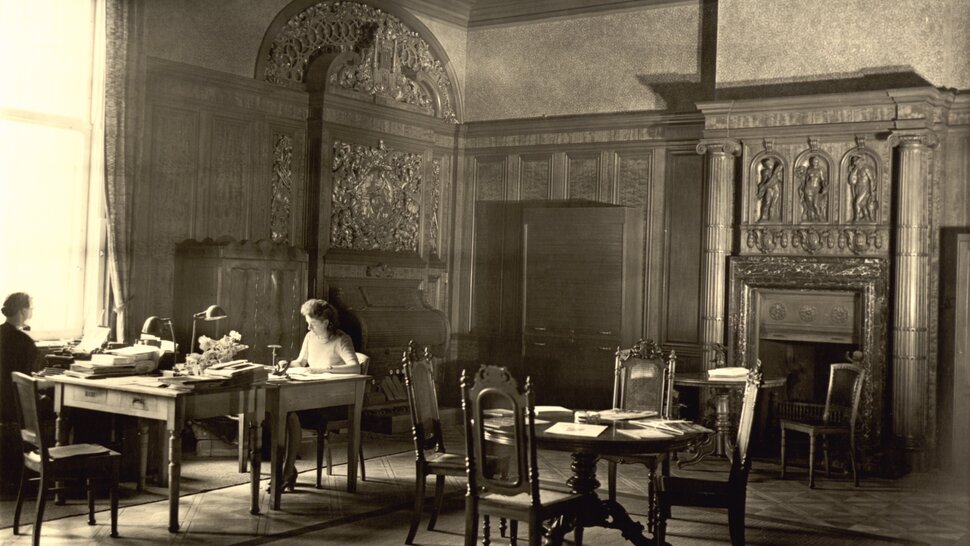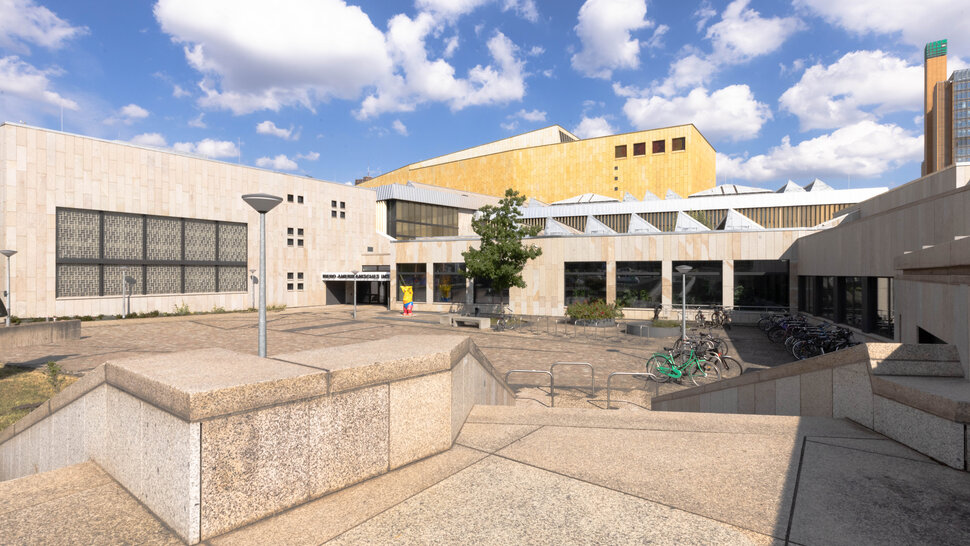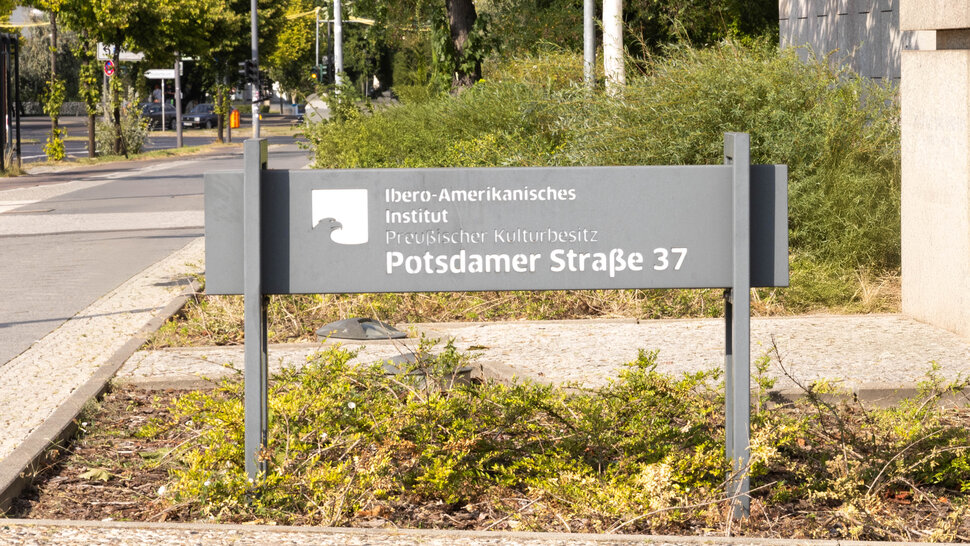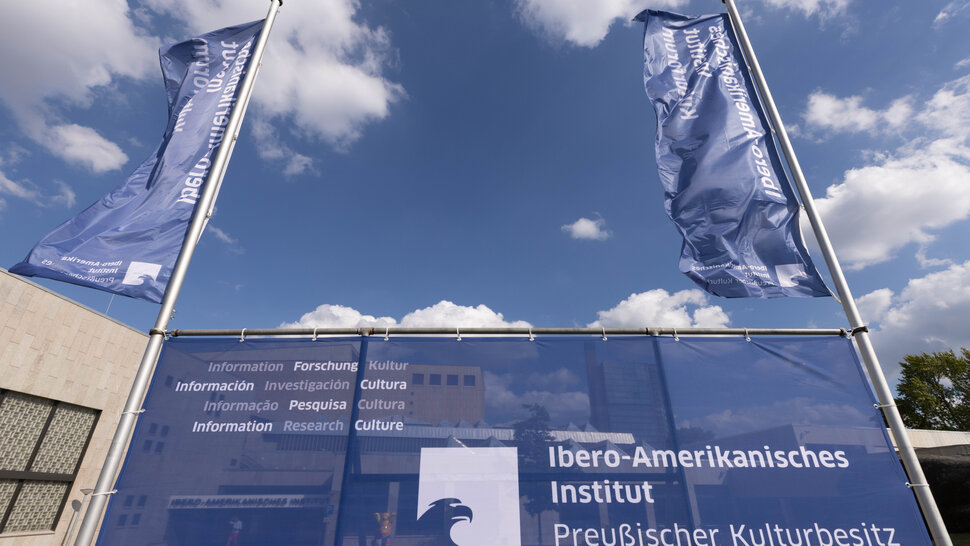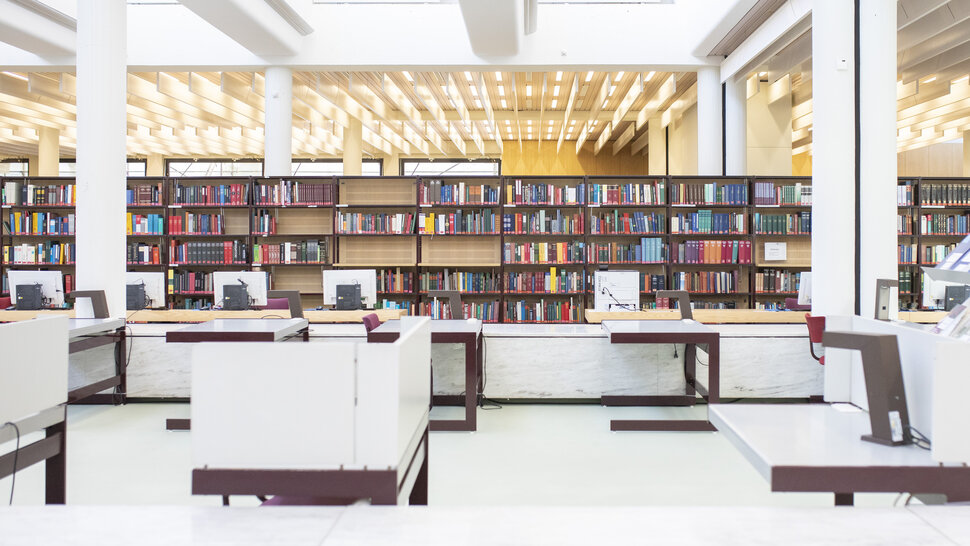The history of the IAI in detail
The Ibero-Amerikanisches Institut (IAI) is a unique example of institutional continuity in the service of intercultural dialog and understanding between Germany and Latin America and the Iberian Peninsula.
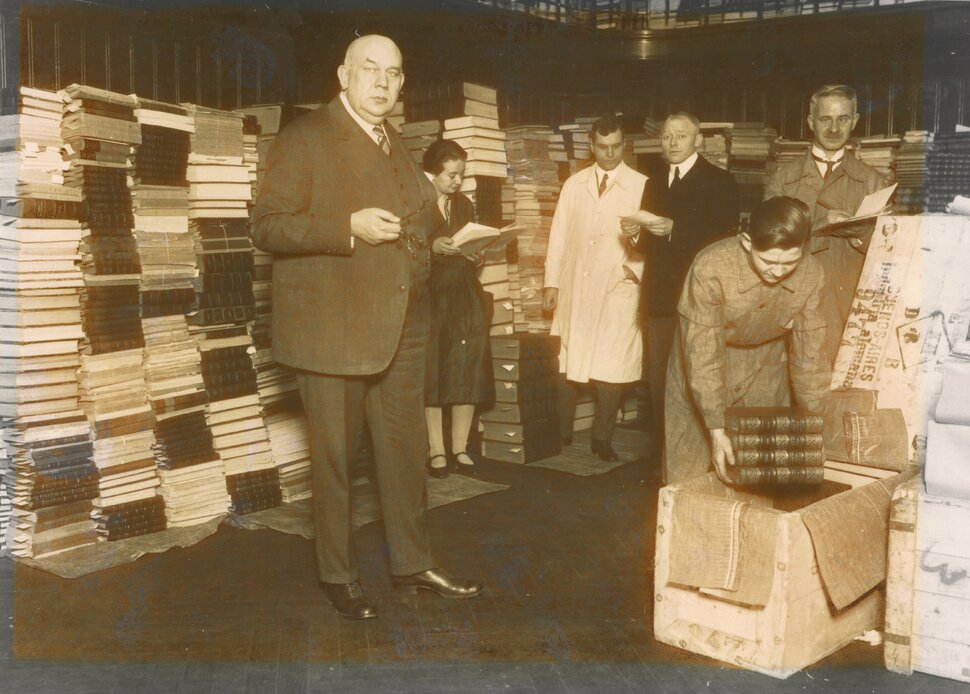
The forerunners
Even before the outbreak of the First World War, there was a growing realization that the scientific and artistic relations that had developed between Germany and Latin America for some time should be consciously cultivated and coordinated. The first Ibero-American institutions in Germany – the Deutsch-Südamerikanisches Institut Aachen (German South American Institute) in Aachen (1912) and the Ibero-Amerikanisches Institut (Ibero-American Institute) in Hamburg (1917) – emerged as a result of the intertwining of economic and scientific interests. In contrast, the Prussian Ministry of Education considered founding a central information center for Germans and Latin Americans in Berlin. However, it soon became clear that the planned institution would be entrusted with a wide range of tasks.
The founding collections
An impetus was needed to turn these plans into reality. This came in the form of a donation from abroad, when the Argentine scholar Ernesto Quesada bequeathed the 82,000 volumes of the private library he and his father Vicente had compiled to the Prussian state on the condition that it serve as the nucleus for a new institute to be founded for the cultivation of intellectual relations between Germany and Latin America. This marked the creation of the three-pillar model of information, research and cultural exchange that is still in place today. In addition to the Quesada collection, the founding collections included the 25,000 volumes of the Mexico Library, which Hermann Hagen had compiled with the support of Mexican President Plutarco Elías Calles, as well as the the collection of the Bonn geographer Otto Quelle, which had been collected with the help of the Brazilian consul Otto Mattheis and had previously been kept in the recently dissolved Ibero-Amerikanisches Institut (Ibero-American Institute) of the University of Bonn.
The plans for the new institution
The plans for the new institution included the establishment of departments for specific countries, headed by experts on those countries. Representatives of various disciplines were to be selected for these tasks, who, with the support of research associates, but also in cooperation with the other departments, would carry out research in their respective fields. The institute was to gain scientific renown through publications. Another task of the IAI was to support Latin American artists and scholars visiting Germany in all matters of cultural exchange. In Germany, the IAI aimed to contribute to “educating the public about the characteristics of the Ibero-American countries” and to “dispelling false ideas”. Furthermore, the library was to be constantly expanded and updated through purchases and book exchanges.
The founding phase
The Ibero-Amerikanisches Institut in Berlin was founded in January 1930. In memory of “the beginning of the connection between the new and the old world,” the official opening of the IAI took place on October 12, the day of Columbus’s arrival in America. Otto Boelitz, a former Prussian minister of culture, was appointed director. The new institution moved into a stately wing of the former royal stables, where it could hold lectures and large events. In the following years, the IAI’s ballroom was the regular venue for celebrating “Día de la Raza” on October 12, as the day was known in Spanish-speaking countries at the time. In contrast to this, the institute’s internal life during the founding phase was much more modest than the original plans would have suggested, because in times of economic crisis the institute received a small budget from the Prussian state.
During the Nazi era and in the post-war period
In 1934, retired Major General Wilhelm Faupel who was close to the Nazi Party, took over the management of the IAI and placed it at the service of the regime. Faupel assumed important positions in various interstate economic and interest groups and created a dense network of relationships with the Ibero-American world. Under his leadership, the IAI expanded its role as a point of contact for representatives of the Latin American and Spanish elites. At the same time, it produced and delivered propaganda literature to German ministries and directly to foreign countries. However, the institute was unable to claim a prominent role in the foreign policy of the Nazi regime. In 1941, it had to vacate its headquarters in favor of the Nazi Party’s Colonial Political Office and moved to the somewhat remote but elegant Siemens Villa in Berlin-Lankwitz. At that time, academic work was developing with limited autonomy from Faupel’s general institute policy.
As early as 1930, the IAI had made the publication of the interdisciplinary journal Ibero-Amerikanisches Archiv (founded by Otto Quelle) part of its program. Ensayos y Estudios, a journal for culture and philosophy with articles in Spanish and Portuguese, was published from 1939. At the same time, the library continued to grow. In particular, progress was made in cataloging the extensive collections. The holdings were expanded through purchases and exchanges with other institutions. In addition, the IAI soon contained a range of documents, collections, and estates of important researchers on Latin America. The collection provided an almost inexhaustible source for later generations of scholars. The first text editions published by the IAI in the series titled Quellenwerke zur alten Geschichte Amerikas, aufgezeichnet in den Sprachen der indigenen Bevölkerungen are based on these materials.
Towards the end of the war, the institute’s staff was significantly reduced. Academic production had to be discontinued. Air raids and fighting left their mark: about 40,000 volumes were lost. The 600 crates of books and periodicals that had remained in the Marstall, as well as other holdings that had been moved to other locations, have since disappeared. Faupel also disappeared. In all likelihood, he and his wife took their own lives shortly before the end of the war.
The US War Department was aware of the IAI’s propaganda activities and considered dissolving the institute. However, the remaining staff managed to pin the responsibility for all political activities on Faupel alone. As a result, the institute, now under the control of the Berlin city government, was able to survive as the “Latin American Library”. The new name reflected the official restriction of the institute's role to that of a special library. The first effort was to bring the library back to its pre-war state through purchases, exchanges and donations. The revival of scientific activities and cultural exchange with Spain, Portugal and Latin America also began soon, albeit not explicitly. As early as 1949, research associate Gerdt Kutscher published the third volume of the Quellenwerke zur alten Geschichte Amerikas; the fourth volume followed just a year later. The exhibition “Argentina in Book and Image”, which was opened in 1954 in the presence of the Berlin Senator for Education and the Argentine ambassador, helped to generate renewed public interest.
In the same year, the Berlin Senate decided to rename the institution the “Ibero-Amerikanische Bibliothek” (Ibero-American Library). On October 12, 1955, it celebrated its 25th anniversary. At that time, eleven permanent staff members, including four with academic training, and 15 temporary staff were employed in Lankwitz. The library holdings amounted to 230,000 volumes and about 1,000 current periodicals with annual increases of about 10,000 volumes. The second series in the field of ancient American studies, Monumenta Americana, was launched at that time. Three years later, the old interdisciplinary tradition was revived with the Bibliotheca Ibero-Americana.
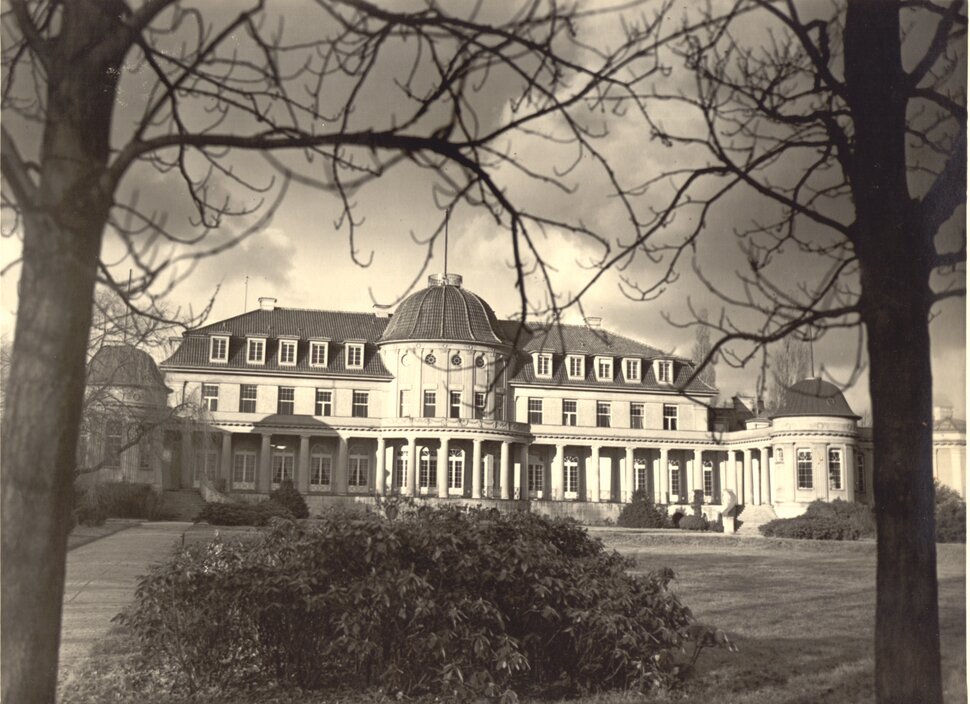
From 1960 to 2000
The Ibero-Amerikanisches Institut was given back its old name in 1962, when it was incorporated into the Stiftung Preußischer Kulturbesitz (SPK, Prussian Cultural Heritage Foundation). The latter was founded with the aim of “preserving, maintaining and supplementing” the Prussian cultural assets transferred to it, as well as “ensuring that these cultural assets are used in the interests of the general public in science and education and for cultural exchange between nations”. The IAI once again developed a wide range of activities: concerts, exhibitions, writers’ meetings and other cultural events, support for foreign guests, library work and research were all promoted, albeit with varying degrees of intensity. The institute’s direct connections to Latin America were also welcome in terms of strengthening the foreign policy position of the FRG vis-à-vis the GDR. It was recognized that the development of long-term cultural relations cannot flourish without continuous personal contacts. To strengthen these, the then director Hans-Joachim Bock undertook seven extensive “book procurement trips”, which were not only aimed at improving the acquisition of books, but also at intensifying cooperation with authors, booksellers, publishers and representatives of scientific institutions through personal encounters.
The IAI’s publishing activities were also expanded in the following years. The first issue of the Indiana journal, which contains articles on ethnology, archaeology and the indigenous languages of the Americas, appeared in 1973. A long-held goal was achieved in 1975 with the launch of the new series of Ibero-Amerikanisches Archiv. In keeping with the institute’s long-standing tradition, this interdisciplinary journal aimed to reach an international readership by publishing scholarly articles in various languages.
Under the direction of Wilhelm Stegmann, the IAI moved into its current premises at the beginning of 1977. It took about half a year to move from the Siemens Villa, which had become too small, to the building designed by Hans Scharoun and built south of the Staatsbibliothek zu Berlin (State Library). The move to Potsdamer Strasse not only meant a modernization of the facilities with improved services, but also the relocation to the Kulturforum (external link, opens in a new window).
Here, the IAI celebrated its 50th anniversary and organized a series of events in 1983 to mark the 200th birthday of Simón Bolívar. When the Berlin Wall fell in 1989, the grounds of the Kulturforum and with it the IAI were in a central location in the capital of a unified Germany. In the following years, under the leadership of Dietrich Briesemeister, the institute expanded its program of events, strengthened its research and publication activities, intensified its networking and introduced an IT system for the library.
Despite its long-term positive development, the IAI was faced with a new challenge in 1996 when the Federal Court of Auditors (Bundesrechnungshof) recommended the cessation of research, publication and cultural work and the integration of the collections into the Staatsbibliothek zu Berlin. The IAI received support from the Stiftung Preußischer Kulturbesitz (external link, opens in a new window), diplomatic missions, international professional organizations, academic institutions, cultural organizations, and important figures in cultural life in Germany and abroad to continue its traditional work.
Since 2000
With the support of an independent commission of experts, the director Günther Maihold, who took office in mid-1999, initiated a restructuring and modernization of the institute. In 2003, the Federal Court of Auditors (Bundesrechnungshof) and the SPK explicitly confirmed the institutional independence of the IAI, thus securing the unique combination of information center, research center and cultural center in the long term.
Today, the IAI defines itself in accordance with its historical tradition as a multidisciplinary non-university institution in the humanities, cultural studies, and social sciences. As an area studies institution, it has a regional focus – Latin America, the Caribbean, Spain, and Portugal – and also takes transregional entanglements into account. It thus has a genuinely international orientation. The equal importance attached to the various areas of work under one roof – Collections, Research, and Events – is what gives the institute its unique profile.
The library and the IAI's special collections have outstanding holdings on the institute's core regions. They are characterized by their cultural diversity, geographical breadth, and historical depth. The IAI's central tasks include developing these multimedia collections, cataloging them, making them widely accessible, and preserving them for the future. Complementing the collections, the IAI develops its own research activities, participates in joint projects with universities, hosts international scholars, and produces a multilingual publication program. The institute is thus a place of cooperative knowledge production and knowledge transfer, as well as cultural translation. Cultural and academic events are a central element of the institute's mission to communicate with society. The event program has an interdisciplinary, multidisciplinary, and multilingual orientation and is carried out with a wide range of partners.
